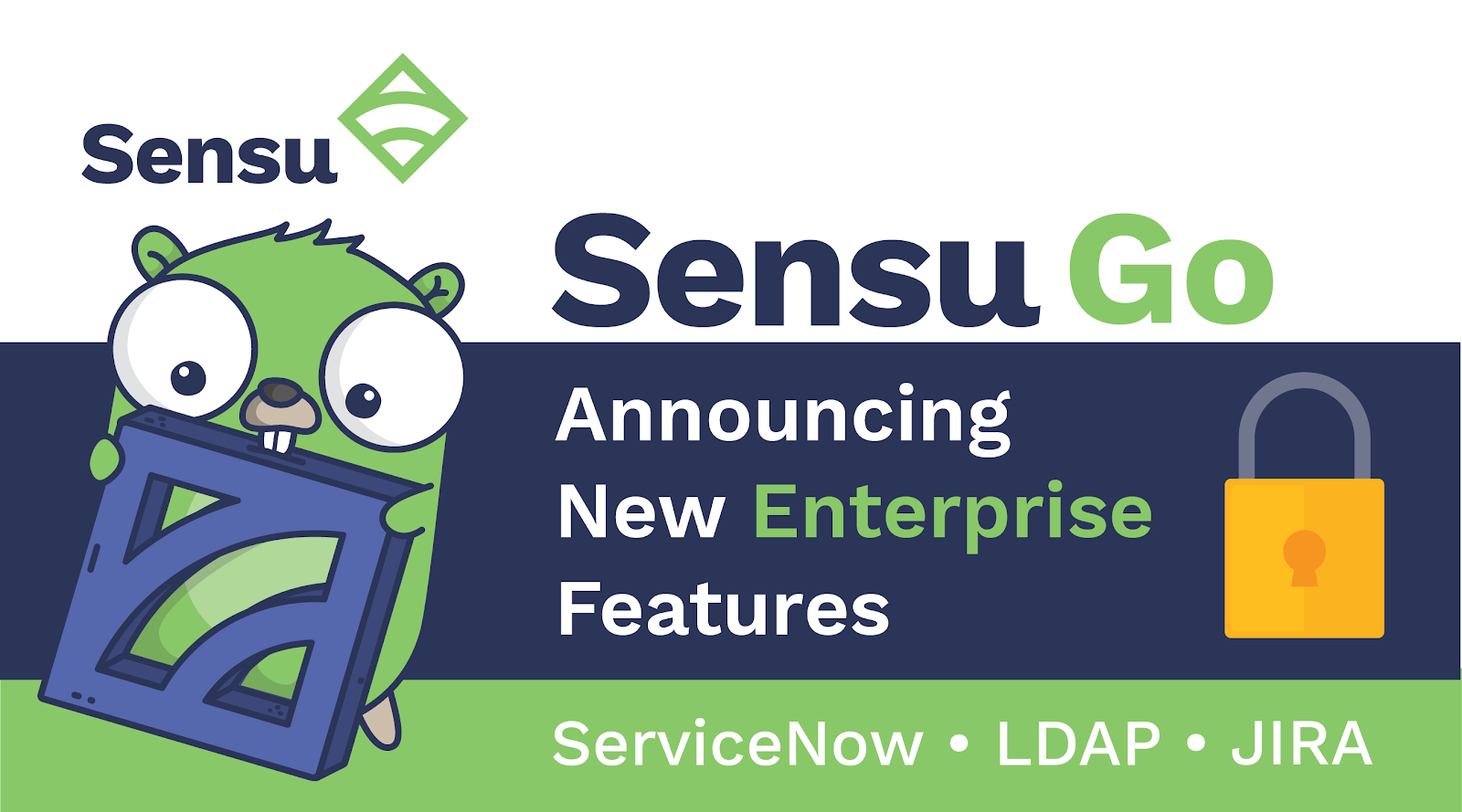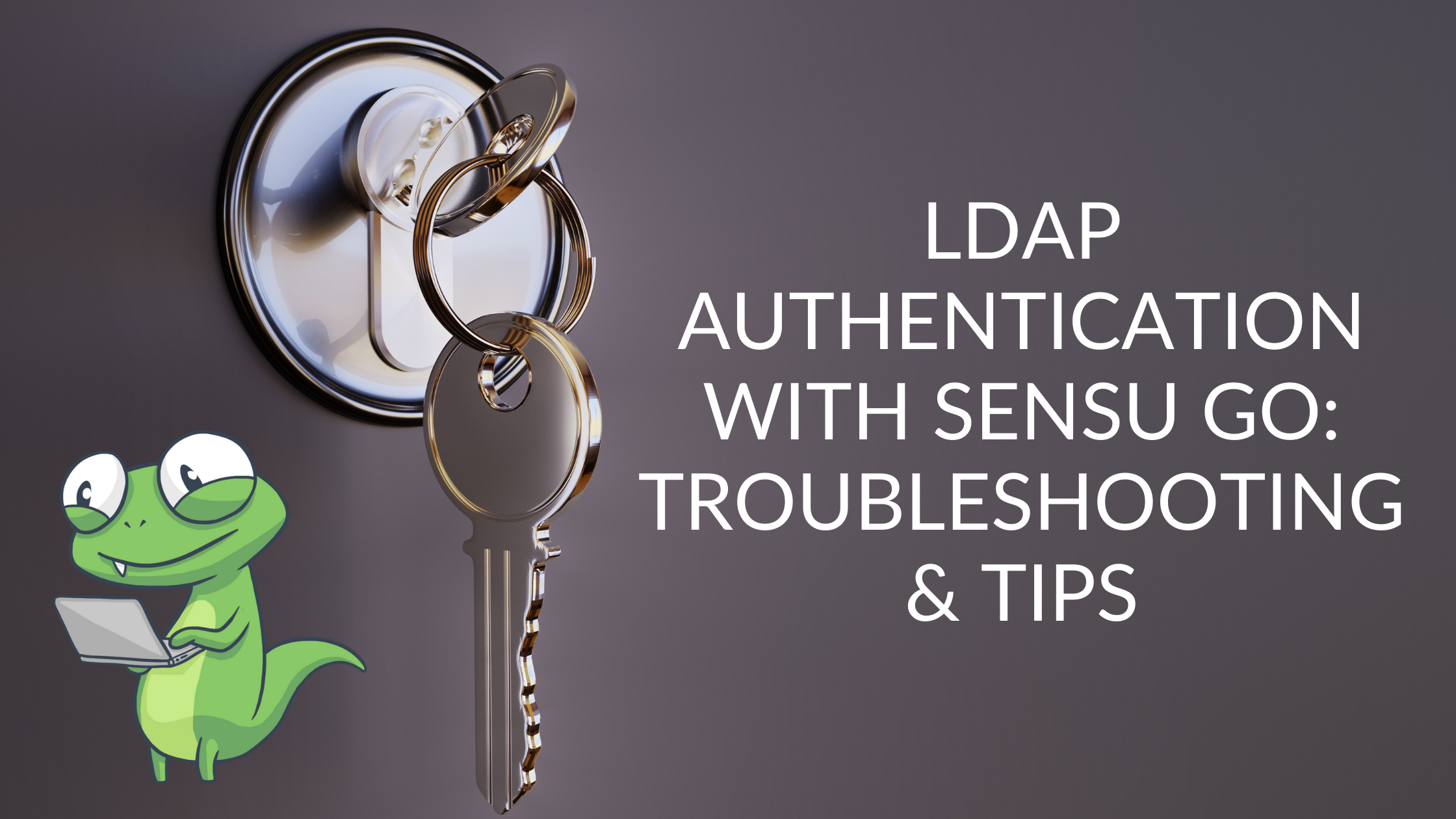We’re thrilled to announce that the latest release of Sensu Go — version 5.2 — is available today! Sensu Go empowers you to automate your monitoring workflows, offering a comprehensive monitoring solution for your infrastructure, applications, and connected devices. Sensu Go is a massive improvement over the original Sensu (version 1.x), with an emphasis on ease of use and quick time to value.
To catch up with what’s going on with Sensu Go so far, check out the blog post and release notes from the December GA releases of Sensu Go version 5.0 and version 5.1. This release of version 5.2 introduces Sensu Go’s first enterprise-only features, several enhancements based on feedback from the Sensu Community, and the general availability of commercial support for Sensu Go. Read on for the full scoop.

As part of our emphasis on better experiences for Sensu users, we’re simplifying how we distribute Sensu Go. Instead of publishing separate downloads for “Sensu Core” and “Sensu Enterprise” as we did with Sensu 1.x, there will only be one set of downloads for Sensu Go, simply called "Sensu Go.” Starting with this version 5.2 release, all of the official Sensu Go downloads will contain both the open source features of Sensu Go as well as enterprise-only features you can easily unlock with a license key (instead of installing a separate “enterprise version”).
Sensu will always be open source at its core, so users will always be able to download the MIT-licensed Sensu Go and compile it from source by visiting the Sensu Go GitHub repository. You can read more about this change in distribution and the reasoning behind it in my Community Forum post.
New features & enhancements
Here’s what’s new in the latest release:
- NEW Lightweight Directory Access Protocol (LDAP) integration (enterprise-only). While the open source Sensu Go provides basic authentication and RBAC, most organizations require integration with a directory service or other authentication provider. Sensu Go version 5.2 adds support for authenticating via an external LDAP provider. See the docs for more info.
- NEW ServiceNow integration (enterprise-only). ServiceNow is also widely relied on in enterprises and heavily used by operators. The Sensu Go ServiceNow handler is a Sensu event handler that creates, updates, and resolves ServiceNow incidents and events. The ServiceNow handler can also automatically create ServiceNow configuration items for the Sensu entity if one doesn’t already exist in ServiceNow.
- NEW Jira integration (enterprise-only). Jira is Atlassian’s popular issue and project tracking software. Many Sensu users rely on Jira for tracking operational incidents (as Jira tickets); as such we’ve had a number of requests for an enterprise integration between Sensu and Jira. The Sensu Go Jira handler is a Sensu event handler that creates, updates, and resolves Jira issues.
- NEW Commercial support for Sensu Go is now generally available. We offer varying degrees of support depending on your needs — head to our support page to see which plan works best for you.
- Minor bug fixes and enhancements. As always, this release includes various improvements based on feedback from you – the Sensu Community. Stay up to date on our progress here.
If you’d like access to the above features (plus many more to come!), please reach out to our sales team. As with previous releases, we’re gathering feedback from our community as to which features we should develop. Join us in Slack or Discourse to share your feedback!
Sensu Go product overview
In addition to these new features, you’ll also get:
- Simplified architecture – deploy Sensu Go in seconds! Sensu Go replaces Sensu 1.x’s dependencies on Redis and RabbitMQ with an embedded data store (etcd) and transport. Installing Sensu Go is as easy as running our official Docker container or downloading and running a single binary (sensu-backend), and logging in to the built-in dashboard – a 30-second process! See our quick start guide to learn more.
- Built-in RBAC and namespaces – multi-tenant monitoring made simple. Sensu Go introduces the ability to configure unique namespaces and their resources in a shared environment, with built-in role-based access controls (RBAC) for granular management of who gets access to what. Learn more.
- Sensu assets – deploy new monitoring checks to a hybrid cloud in real time. Sensu Go now provides a built-in solution for downloading and installing agent plugins (monitoring checks) and backend plugins (mutators and handlers). No more need to pre-install plugins using complex build pipelines or configuration management, and it’s a seamless solution for deploying new monitoring plugins across traditional bare-metal infrastructures, public cloud providers, and cloud-native environments like Kubernetes. Learn more.
- Versioned configuration API and helpful
sensuctlCLI – even more ways to automate Sensu! Sensu Go shifts configuration from files-on-disk to an etcd-backed configuration API, and thesensuctlcommand-line tool to make it easy to interact with the API (very similar to kubectl for Kubernetes). It works great with configuration management too! Learn more.
Get started + next up
Ready to try the new enterprise-only features in Sensu Go? Contact our sales team to get your trial license key or set up a demo.
We’re thrilled to continue rolling out new and exciting features throughout 2019. As a quick preview, you can look forward to:
- An updated dashboard, which offers more control and reduced operator burden. Coming soon, we’ll have an overhauled homepage, an event details page, and filtering on namespaces.
- Custom graphing dashboards, including support for common performance monitoring visualizations such as single stat widgets, histograms, gauges, customizable tables, and more.
- Resource management from the dashboard will offer the ability to create and edit resources (events, entities, and checks) from the dashboard without having to go through
sensuctl. - More authentication options with Active Directory and Security Assertion Markup Language (SAML).
If you’d like to see an extended roadmap, please reach out to our sales team. Stay tuned for more feature updates in the coming months, and for now — happy monitoring!


